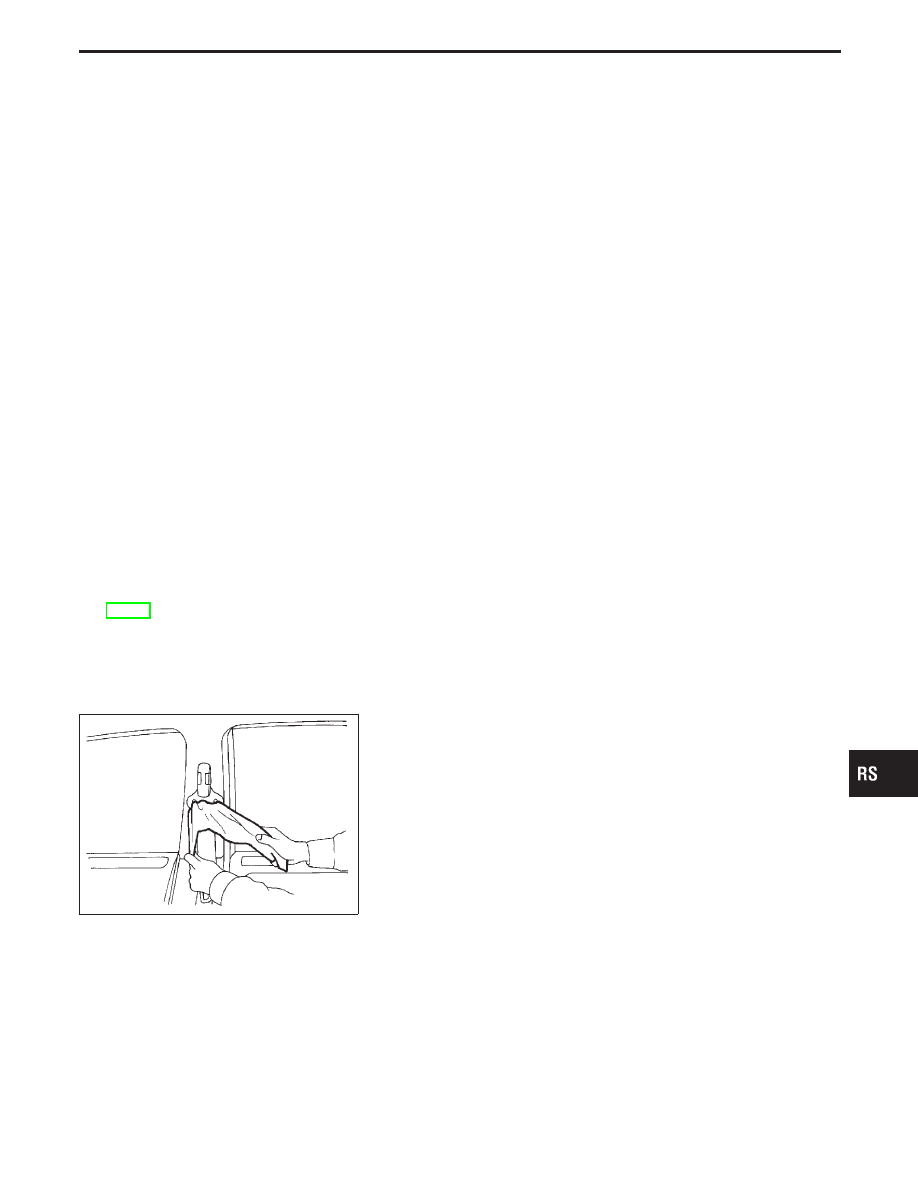Infiniti Q45 (FY33). Manual - part 523

Seat Belt Inspection
AFTER A COLLISION
WARNING:
Inspect all seat belt assemblies including retractors and attaching hardware after any collision.
NISSAN recommends that all seat belt assemblies in use during a collision be replaced unless the
collision was minor and the belts show no damage and continue to operate properly. Failure to do so
could result in serious personal injury in an accident. Seat belt assemblies not in use during a colli-
sion should also be replaced if either damage or improper operation is noted. Seat belt pre-tensioner
should be replaced even if the seat belts are not in use during a frontal collision in which the air bags
are deployed.
Replace any seat belt assembly if:
I
The seat belt was in use at the time of a collision (except for minor collisions and the belts, retractors and
buckles show no damage and continue to operate properly).
I
The seat belt was damaged in an accident (i.e. torn webbing, bent retractor or guide, etc.).
I
The seat belt attaching point was damaged in an accident. Inspect the seat belt attaching area for dam-
age or distortion and repair as necessary before installing a new seat belt assembly.
I
Anchor bolts are deformed or worn out.
I
The seat belt pre-tensioner should be replaced even if the seat belts are not in use during the collision in
which the air bags are deployed.
PRELIMINARY CHECKS
1. Check the seat belt warning lamp/chime for proper operation as follows:
a. Switch ignition ON. The seat belt warning lamp should illuminate. Also, the seat belt warning chime should
sound for about seven seconds.
b. Fasten driver’s seat belt. The seat belt warning lamp should go out and the chime (if sounding) should
stop.
c.
If the seat belt warning lamp is blinking, conduct self-diagnosis using CONSULT-II, and seat belt warning
lamp. Refer to “Self-diagnosis”, “TROUBLE DIAGNOSES — Supplemental Restraint System (SRS)”,
RS-39.
2. Check that the seat belt retractor, seat belt anchor and buckle bolts are securely attached.
3. Check the shoulder seat belt guide and shoulder belt height adjuster for front seats. Ensure guide swiv-
els freely and that belt lays flat and does not bind in guide. Ensure height adjuster operates properly and
holds securely.
SRS353
4.
Check retractor operation:
a.
Fully extend the seat belt webbing and check for twists, tears
or other damage.
b.
Allow the seat belt to retract. Ensure that belt returns smoothly
and completely into the retractor. If the seat belt does not
returns smoothly, wipe the inside of the loops with a clean
paper cloth etc. because dirt built up in the loops of the upper
anchors can cause the seat belts to retractor slowly.
c.
Fasten the seat belt. Pull firmly on belt and buckle to ensure
belt remains latched. Unfasten seat belt. Ensure belt releases
freely and buckle button returns to original position.
5.
Repeat steps above as necessary to check the other seat
belts.
GI
MA
EM
LC
EC
FE
AT
PD
FA
RA
BR
ST
BT
HA
EL
IDX
SEAT BELTS
RS-7